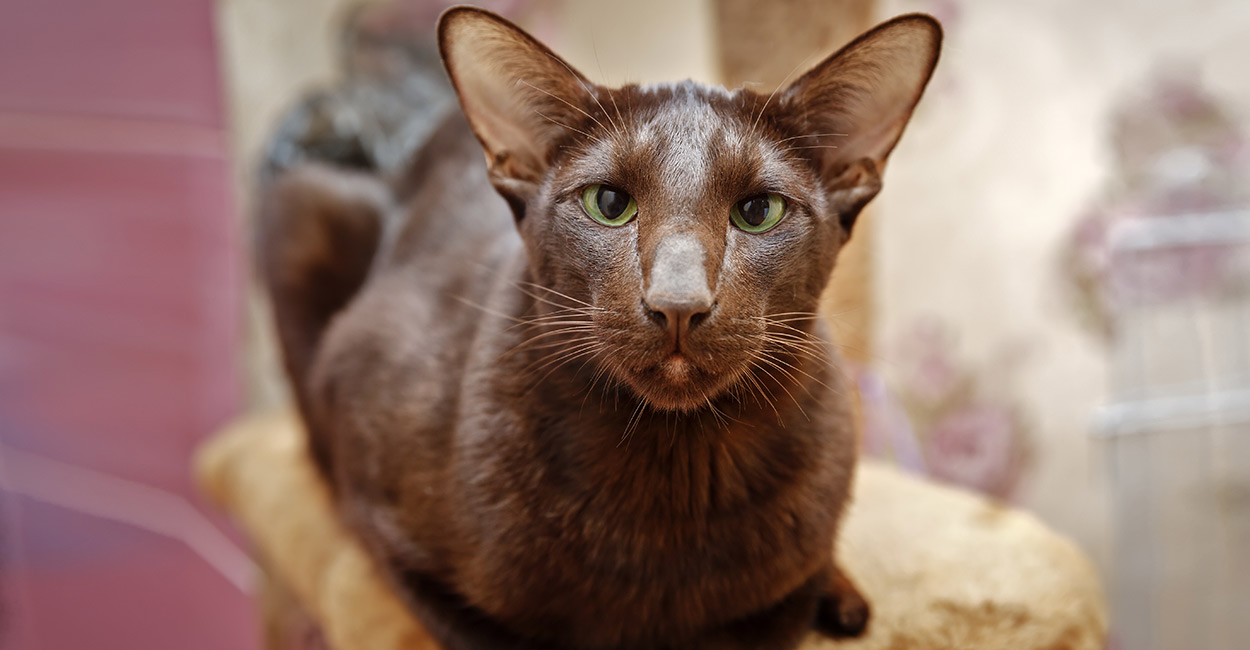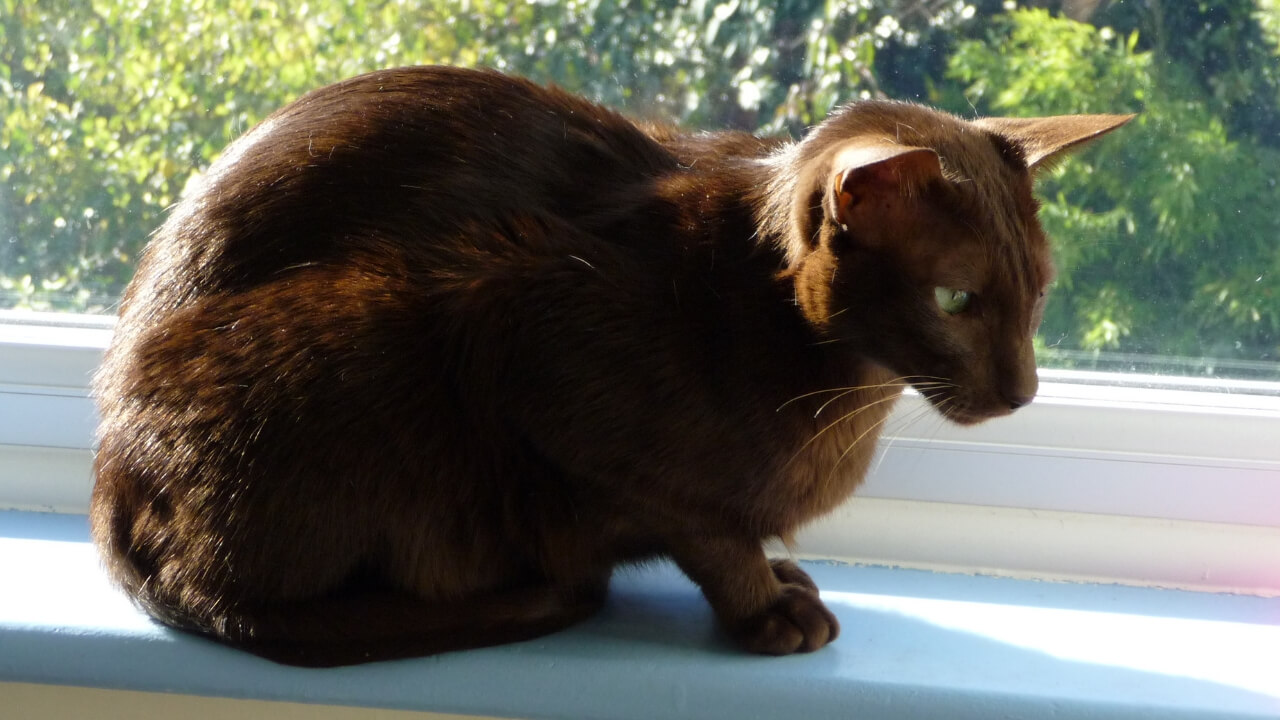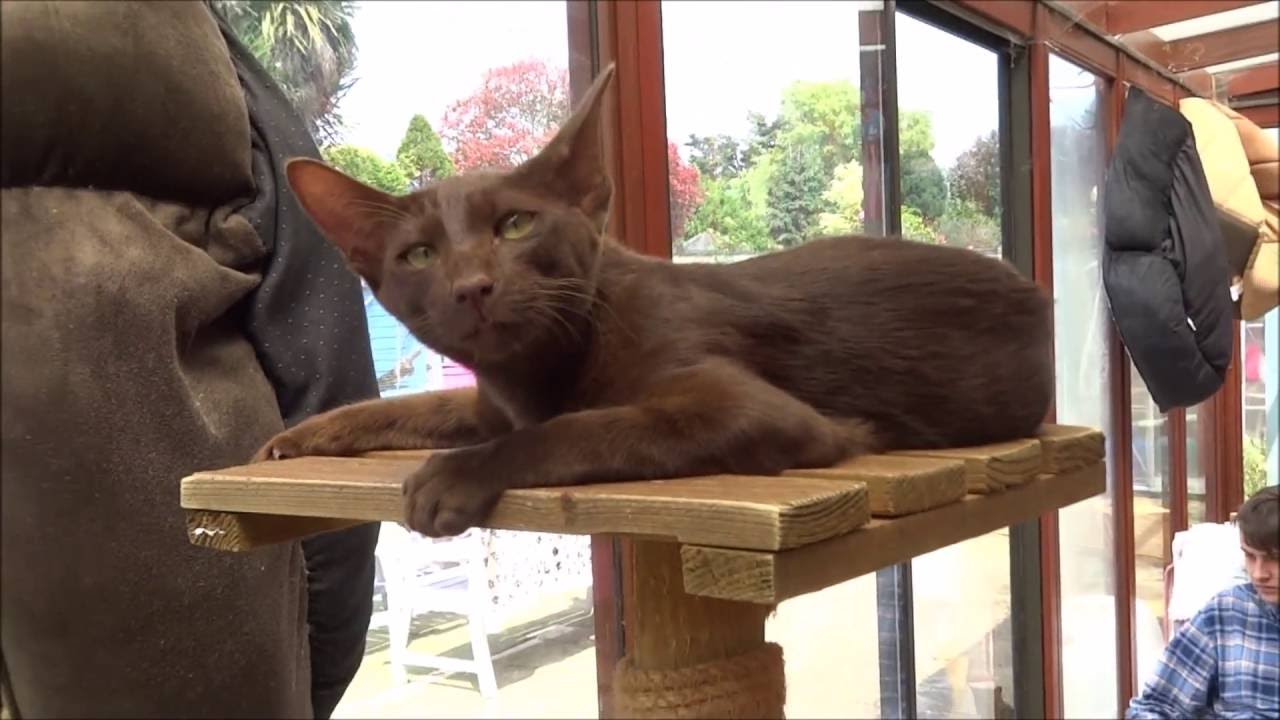
Havana Brown Cat – History, Characteristics, Best Care & More
Contents
Havana Brown History
The Havana Brown is a solid chocolate brown hybrid cat that originated in England in the early 1950s. Some historians think that solid brown (self brown) cats may have come to England from Thailand in the late 1880s as “brown Siamese-type cats” were seen in Europe and England until the late 1920s.
The cats were exhibited under various names including “Swiss Mountain Cat” and “Brown Cat”. By 1930, the Siamese Cat Club of Britain discouraged breeding any non-blue-eyed Siamese and the breed completely disappeared.

There is no documentation or evidence to support any claim that these brown cats were Havana Browns. However, in the early 1950s, a group of British breeders tried to produce a solid brown cat in the chocolate point coloring of the Siamese. They crossed Siamese, domestic short-hairs and Russian Blues. These breedings were documented and recorded and every Havana Brown today can be traced back to the early 1950s when the hybrid breed was officially created.
The first chocolate hybrid kitten was born in 1953 and by 1958 they were accepted by the Governing Council of the Cat Fancy (GCCF) in Britain as the breed “Chestnut Foreign Shorthair 29.” (The name “Havana” was finally granted by the GCCF in 1971.)
Havana Brown was imported into the US in 1956 and breed development continued in different ways in both the US and England. In England, the breeders standardized on the Oriental Shorthair or Siamese type look by encouraging out-crosses to chocolate point Siamese and certain Oriental Shorthair colors.
While in the US the CFA accepted registrations for the breed in 1959 and granted Championship status in 1964. However, by 1974 all outcrossing were prohibited and only breeding with Havana Browns was allowed. This resulted in a somewhat
restricted gene pool and a Havana that is closer in conformation to the Russian Blue than the Siamese or Oriental Shorthair. To enlarge the gene pool, the CFA in 1998 permitted out-crossings to certain Oriental colors and 1999 out-crossings were permitted to chocolate point or seal point Siamese. The Havana Brown is still a rare breed to find in the US and not often exhibited at cat fancy shows.
Havana Brown Characteristics
The Havana Brown has a lustrous chocolate brown coat and a medium-sized firm and muscular body. The American Havana favors a distinctive rounded muzzle and a more moderate body than the British Havana which is more Siamese in conformation.
The smooth and lustrous coat is short to medium in length and feels like a mink coat. The head of the American Havana has a distinct stop at eye level which the British Havana lacks. The head is longer than wide with a pronounced break behind the whisker pads and a square muzzle. The ears are large, round-tipped and wide-set and tilted forward.
The eyes are medium-sized, oval and any shade of green. When you pick up a Havana, you will be surprised at how heavy this lithe-looking cat feels. Males are larger than females and can weigh from 8 to 10 pounds while females weigh from 6 to 8 pounds.

Color Varieties
The coat color is an even shade of warm brown that tends more toward mahogany or red-brown than black-brown. The nose leather is brown to rosy-brown and the paw pads are rosy-brown. Whiskers are brown to complement the coat.
Havana Brown Temperament
Havana Browns are affectionate, gentle, sweet, charming, intelligent and playful. They are quieter than a Siamese with a soft little voice. They are a people-oriented breed that craves attention from their human companions but will adapt to other pets and children.
Havanas will follow you around and help you with your daily tasks and extend their paws to touch you for attention. Havanas love to play “fetch” and can frequently be found carrying toys and other objects around. This is an intelligent, sociable and affectionate cat that will adapt to most situations. If you are going to be leaving your cat alone for any length of time, then Havanas appreciates having another cat (any type) around to play with.

Havana Brown Cat Care
Havanas require very little grooming beyond a twice a week combing and an occasional rub with a chamois cloth to keep the lustrous mink-like coat shiny.
